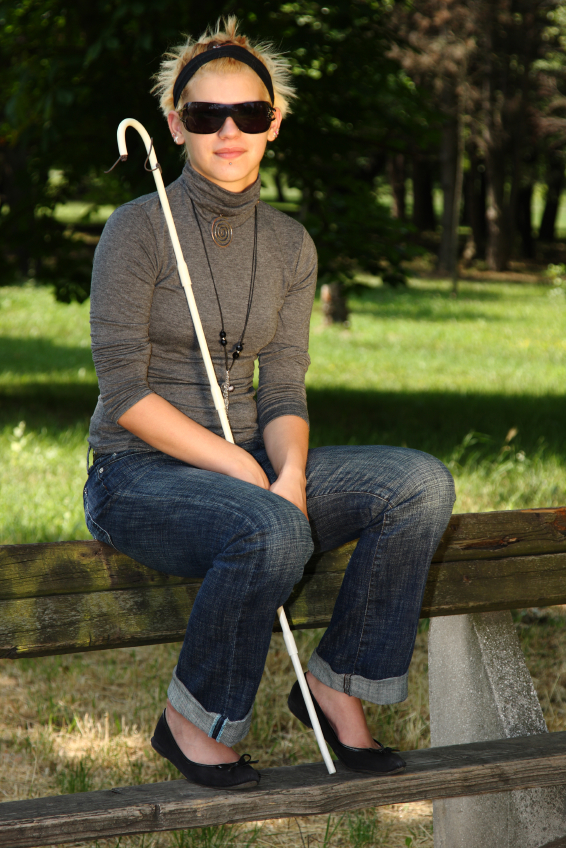Workplace Disability Etiquette
Blind and Low Vision
 The most important thing that people with vision loss need is
The most important thing that people with vision loss need is
information.
For instance, it doesn't work to yell, "Look out!!" if there is an obstacle in their path. Instead say, "Excuse me, but there is a box on the floor to your right about 20 feet ahead of you."
Likewise, when you encounter someone, say your name and who might be with you."Hi, I'm Gary, and I'm offering my hand to shake. This is Joanne at my right."
Always speak facing the person. People who are blind can tell from the sound of your voice if you are looking in their eyes – and they care.
Never touch a person with a cane or using a service animal. For some, blindness makes their balance delicate and you could cause them to fall.
Those service animals sure are tempting, but resist! There is a primary relationship between a working animal and their human. To distract a guide dog is to endanger the person. If the team is not in motion, it's OK to ask if you can interact. Always respect the answer.
A person with vision loss might be able to see quite well through a narrow tunnel in their vision, or by getting closer. Allow them to establish their physical orientation to you, which might seem a little odd if it's close or off to the side a bit.
If a blind person accepts an offer of guidance, allow them to choose how to make contact. Some prefer to take your arm, some prefer a hand on your shoulder. In all cases, they will walk slightly behind you – so that you fall off the cliff before they do!
They, at the risk of playing into stereotype, have a finer relationship to sound than those with vision. For instance, they will remember where the car is parked by remembering the sounds they hear around them. They can also judge if the locaton is close to a building or an open space. This is simply their natural adaptation to vision loss.
People with vision impairment are skilled in ways that would not seem apparent. They have ways of managing information in their minds, and thanks to technologies that make it possible to organize information for easy access. See the Assistive Technology page to learn more.
General Etiquette | Wheelchair Users | Vision Loss | Hearing Loss
Cognitive Impairment | Speech Impairment | Invisible Disabilities
Disability & Language
